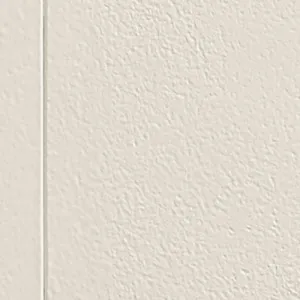The Latest
Oleander and Finch on Creating Her Design Studio at Home
Photography & Design: Oleander & Finch Interiors
Style Sourcebook Profile: Oleander and Finch Interiors
Although lockdowns and stay-at-home orders are (thankfully) a memory of the past, many of us still choose to work from home and prefer the flexibility it offers. E-designer Rhiannon from Oleander and Finch Interiors, who many of you likely already know and love, is a huge testament to this and has recently unveiled her home design studio in the Macedon Ranges. Converted from a space in the backyard to a small design studio, this space provides Rhiannon with the ideal location for mood board creation and zoom sessions with clients alike. The studio offers a creative design space for Rhiannon’s busy work schedule and also separates her work and home life as a working mum.
From the classic and understated Hardie™ Fine Texture Cladding by James Hardie on the exterior, to the organic and textural details in the interior, this design studio is giving us all the work from home inspiration we could ever need. So, grab a cuppa and discover the inspiration behind the studio, why having your own work from home space is so important and Rhiannon's advice for creating your very own design studio at home.
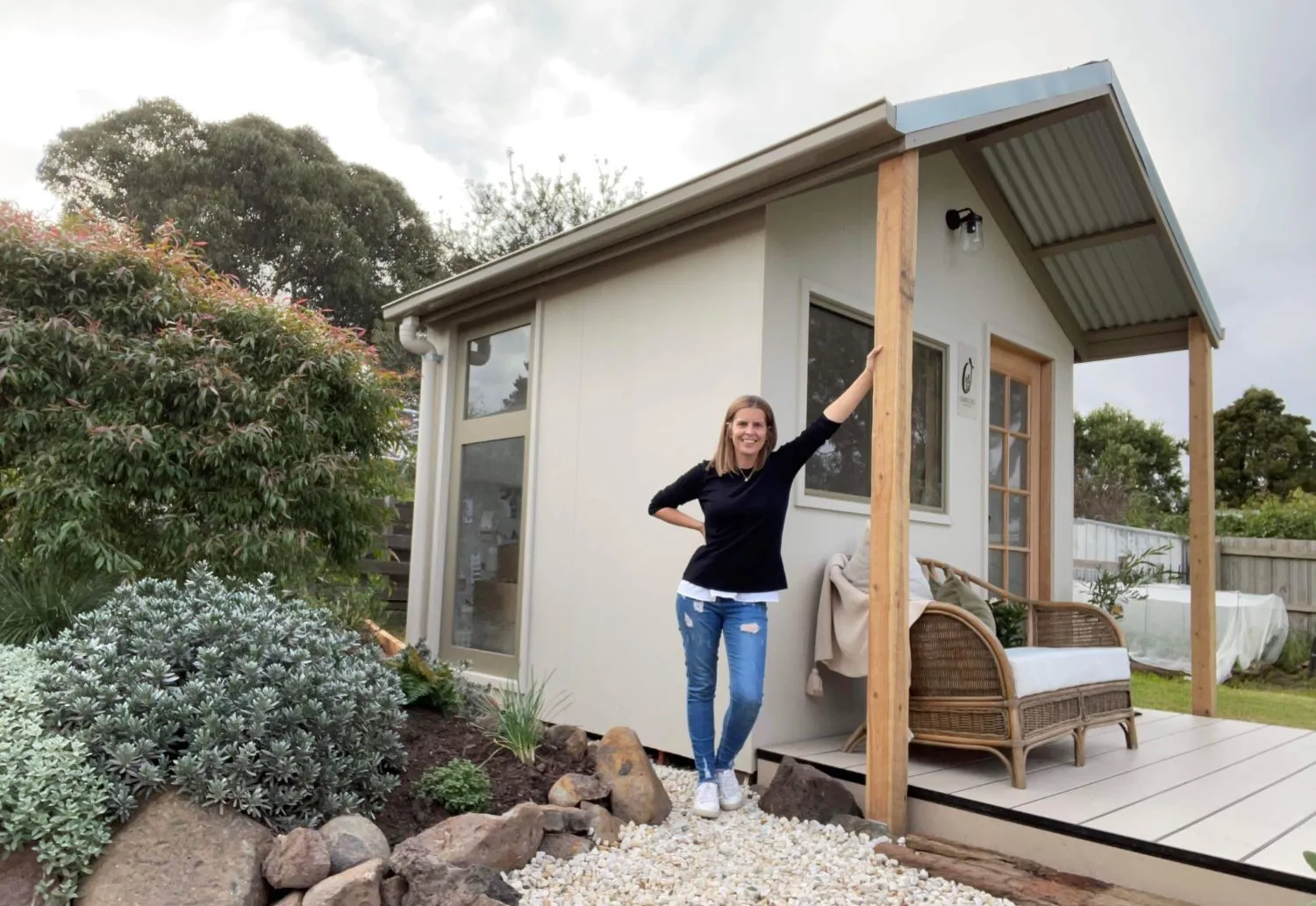
Hi Rhiannon, it’s so lovely to chat with you. For those who might not know, can you tell us a bit about what you do for work and how you got into the interior design industry?
I run an e-design business and work with clients around the world to elevate their spaces from the comfort of their sofas. I am an industry mentor to up-and-coming designers as I have a unique cocktail of experience that is both business, marketing and creative based. When I was on maternity leave with my second son, I decided to use that time to up-skill and study design online, and I have never looked back. Every day is a surprise when you work with so many clients and different styles and brainstorm with new business owners - I’m living my dream.
Congratulations on recently finishing your very own design studio at your home. Can you tell us a bit about what made you decide to create your own design studio at home?
It got to a stage at home where my dining table was divided into grids of new build selection flat lays and samples, and I was dialling in to three or four virtual consult and strategy calls daily but scanning the room nervously as at any minute I was at risk of having one of my boys fly past in the background. I didn’t want my kids to feel like they couldn’t just be kids and to constantly be asking them not to run off with my brushed brass sample for instance. The studio provides me a dedicated space to store all of those samples, books, fabrics etc and is a place that is always tidy and organised and not chaotic at all. I now have the ability to meet with new homeowners in person, or virtually, run workshops, host business planning days etc without blurring the home and work lines.
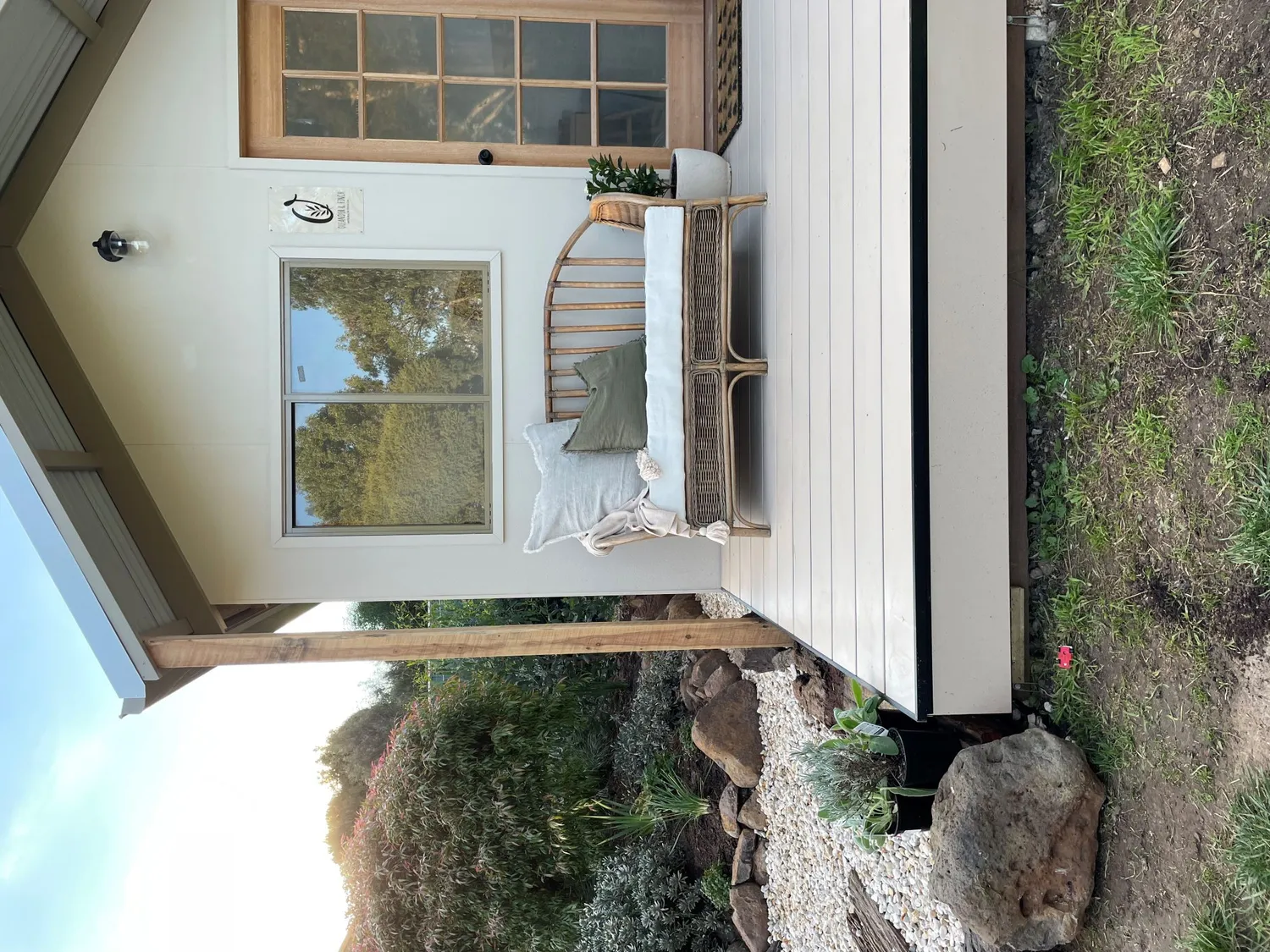
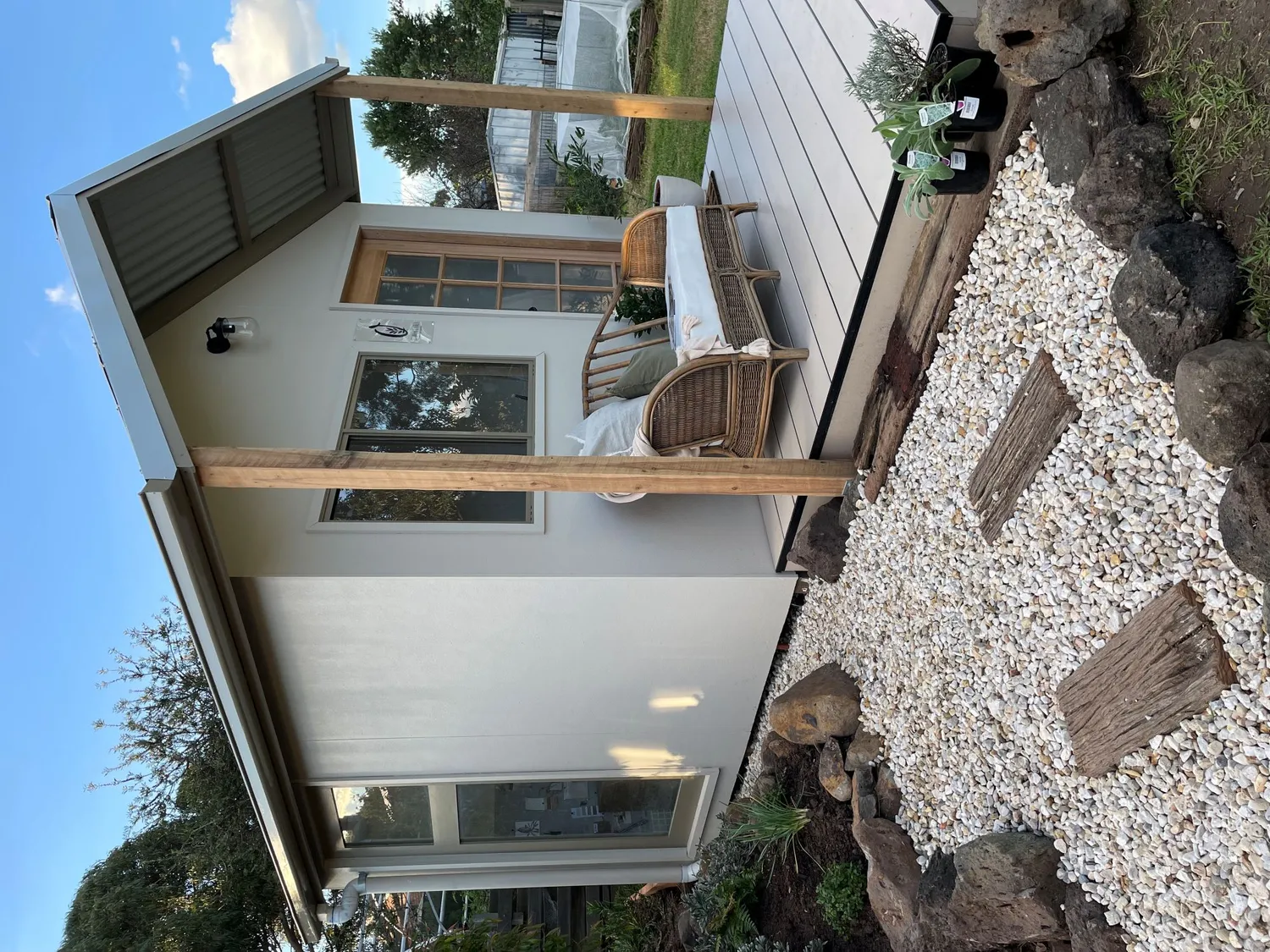
Why is being able to have your own space for you to work from at home so important?
I am so much more productive in a space that is designed with my business model in mind. Everything is functional and well laid out. It’s so important to me to now be able to take after hours consults etc and not be competing with the sounds of bath time and bed refusal. It has breathed space to elevate my business beyond what I could achieve from the main house.
Before having your home design studio, what were some of the challenges you faced with juggling working and being a mum?
There were no boundaries in place between these two elements of my life previously. I would be working while supervising play, taking out the recycling; every time I sat down, I felt as though another load of washing needed hanging out or maybe I should just quickly mop the floors. The studio allows me to shower and dress and “go to work” like I did in previous employment. It means the home duties can wait and be attended to outside of business hours like is the case for many others working outside of home. Now I get a lot done in school hours which is non-negotiable work time.
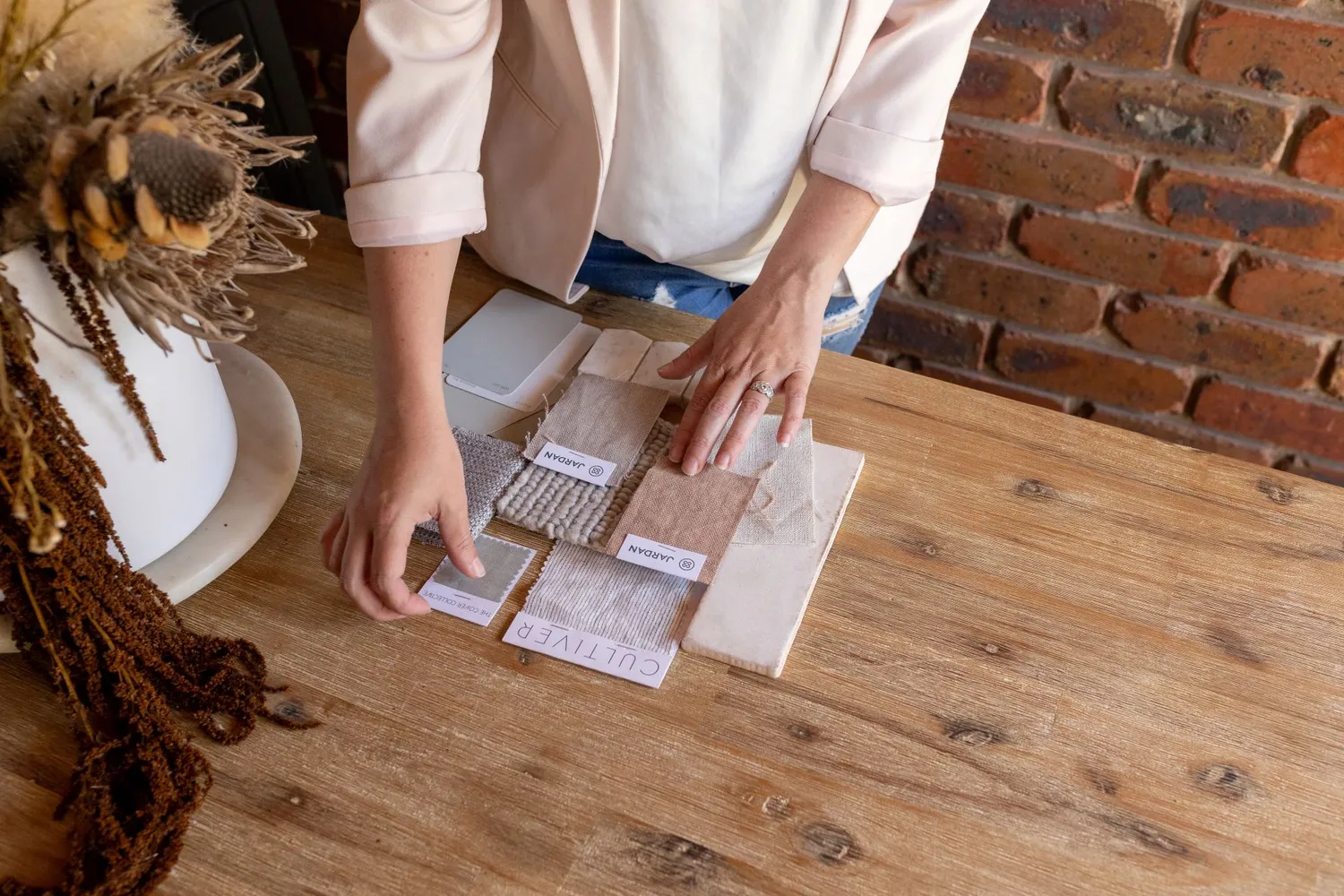
What was your inspiration behind the look and feel of your home design studio?
I gathered it from a lot of places. Little cottages and shops I’ve seen locally on trips out to Kyneton and Castlemaine, Pinterest, thousands of hours watching YouTube renovation shows, interior design books and deep dives into tiny homes and smart spaces. My main house is modern country style with a rustic luxe feel but I wanted the design studio to have more of a contemporary, modern profile as it’s a new building on the property but one that compliments rather than contrasts with the existing building.
What would be your advice to someone who is considering creating a studio or even specific room in their home dedicated for working?
As tempting as it is to rush straight into what artwork and pillows/decor you want, the absolute most important start is to consider council permits (ours is just under what you need permission for) and to consider your budget as you will need to invest in a build like this. Next is to list out the functionality, what are the key pieces you need to include to make the office work for you and how you run your business? Do you need more storage, or multi purpose pieces like my built-in seats that lift up to house all the books and samples?
From there, I would consider how you want the space to feel - to yourself working all day but also to your visitors or clients. If you are going to be working virtually, I would carefully plan your backdrop as the hero piece in the room. In my studio, I have three oversized material mood boards created to support my digital work with actual tangible samples and these double as my zoom backdrop. I would then get to the fun part and mood board a look and feel with a cohesive colour palette, some inspiration pictures of the feeling it will deliver and some key items you will include.
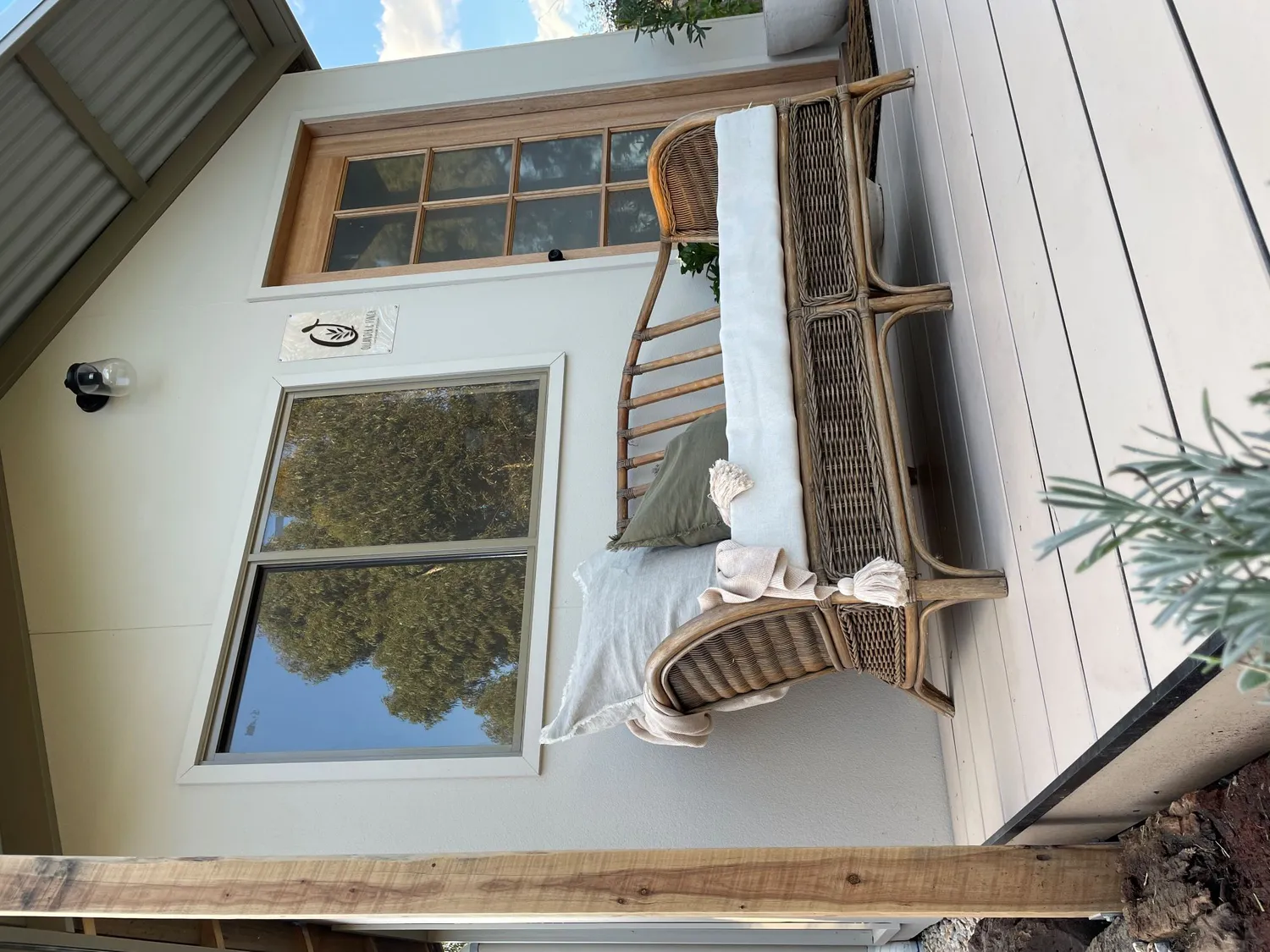
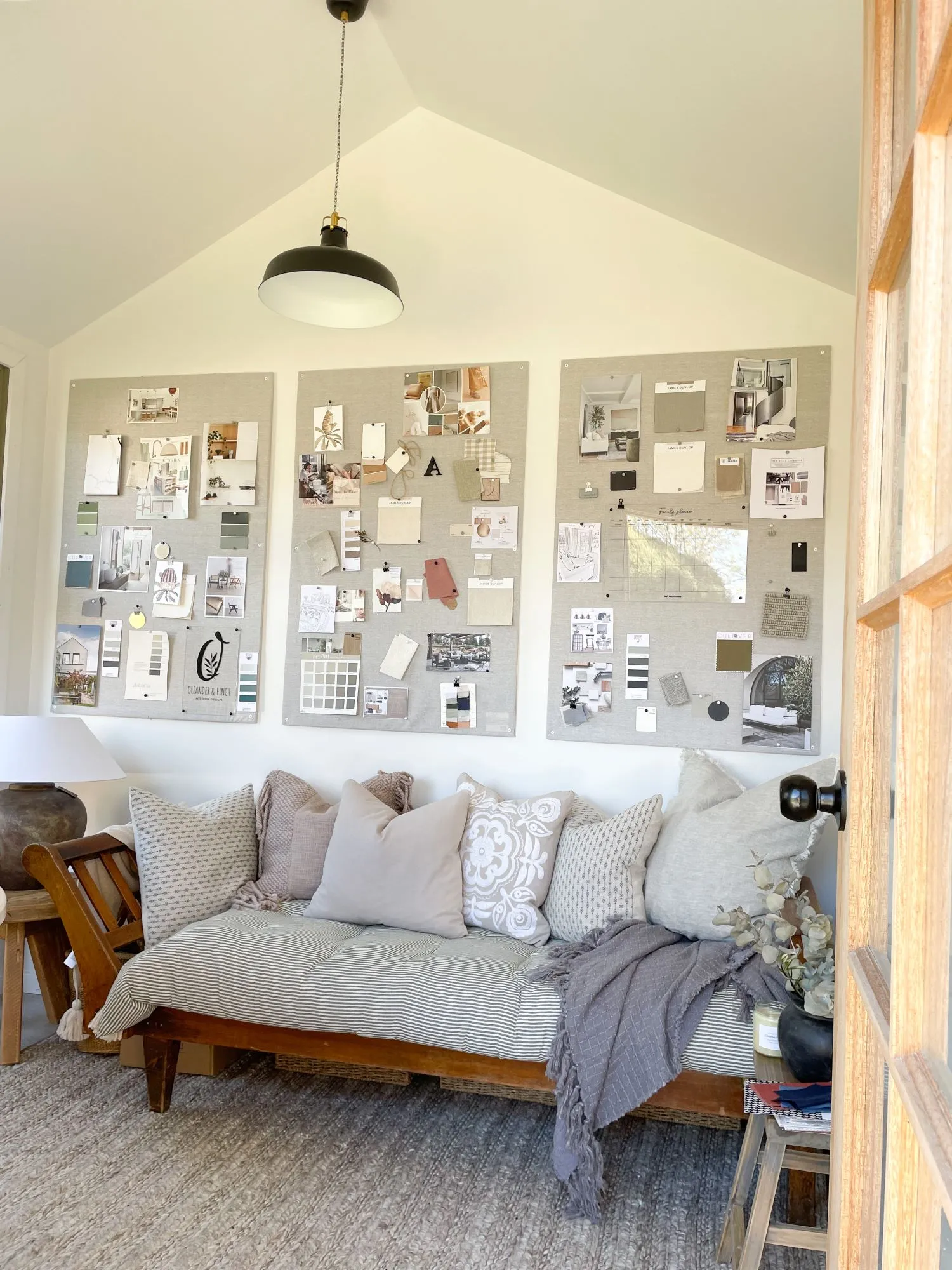
Tell us a bit about the products you used and why you chose them?
The exterior cladding is Hardie™ Fine Texture Cladding by James Hardie which I have painted in Dulux Vintage Beige. I wanted to keep the warm neutral tone of the raw cladding but give it slightly more depth of colour and bring it to loosely reflect my branding colours. We also have a deck out the front where I can sit and work on summer evenings while the kids play. The deck was chosen as it’s so robust and family friendly and I don’t have to do any maintenance going forward – just mop it occasionally. The French door I’ve kept timber to tie in with the timber Cyprus pillars we added to bring warmth and charm to the space. The windows and trim are painted in Dulux Army Issue.
The interior flooring is the Abode Campari Coastal hybrid flooring from Choices Flooring and sets a lighter more playful interior than in my main house where the floors are dark. I have also addressed the textural acoustics in the room with a beautiful, braided wool rug in natural tones by Six Fourteen.
I chose an old miners’ antique chaise as the sofa in the space as they made things so much smaller back in the day and my studio is only 2.8 x 3m so this doesn’t encumber on the room and it is low - making the cathedral-style ceiling seem much larger. Rather than reupholster this, I have covered it in an olive-striped mattress topper from Temple and Webster and then covered it in beautiful feather-filled pillows (not sorry about having somewhere to display these where my kids can’t throw them off the sofa!). I also hunted for months to find a suitable round table at only 1m in diameter so I could fit it hard up against the custom seats or pull it out to work on flat lays etc. Layered lighting was important to me so as well as the pendants, I have chosen the oversized table lamp feature by James Lane.
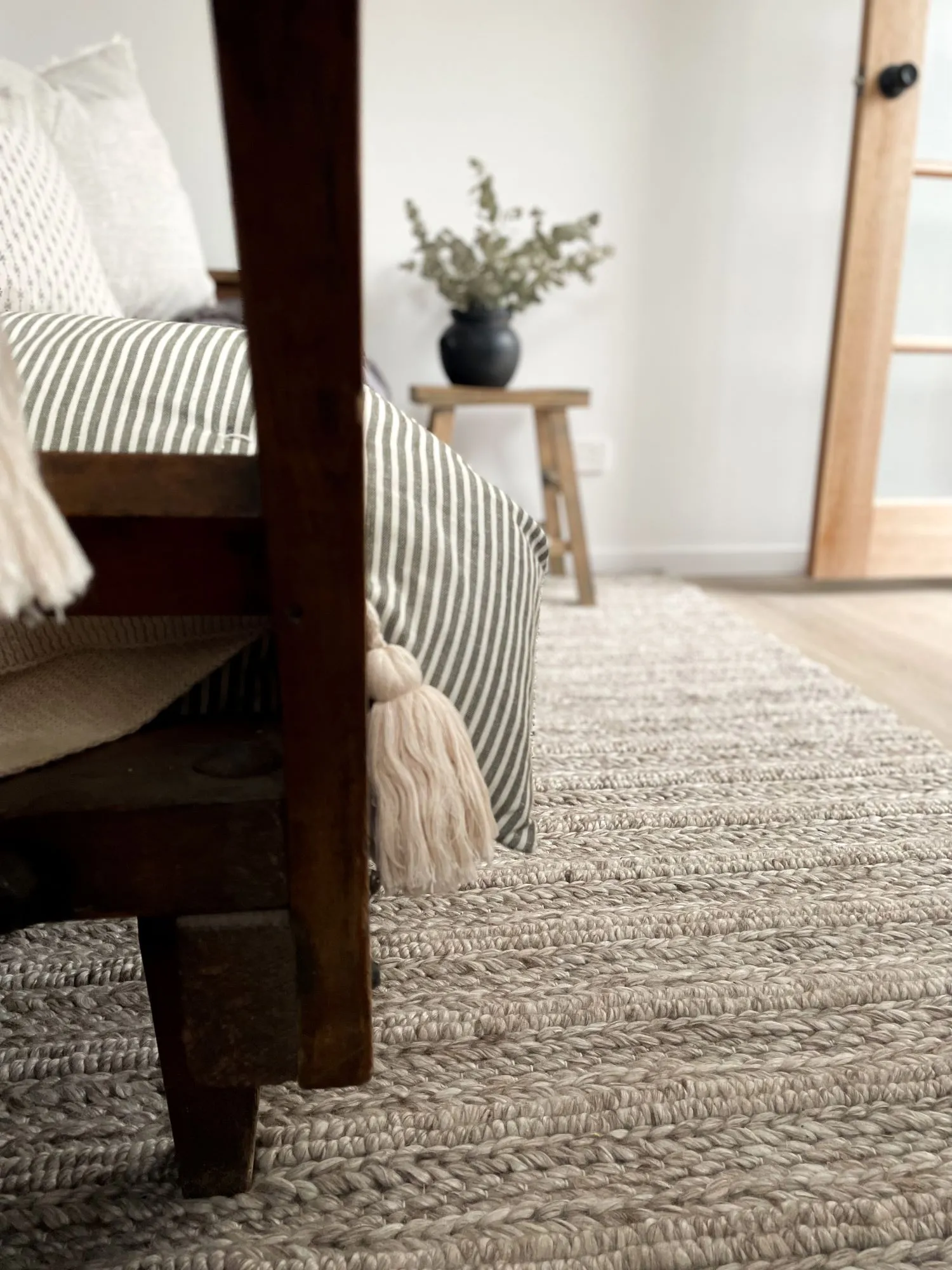
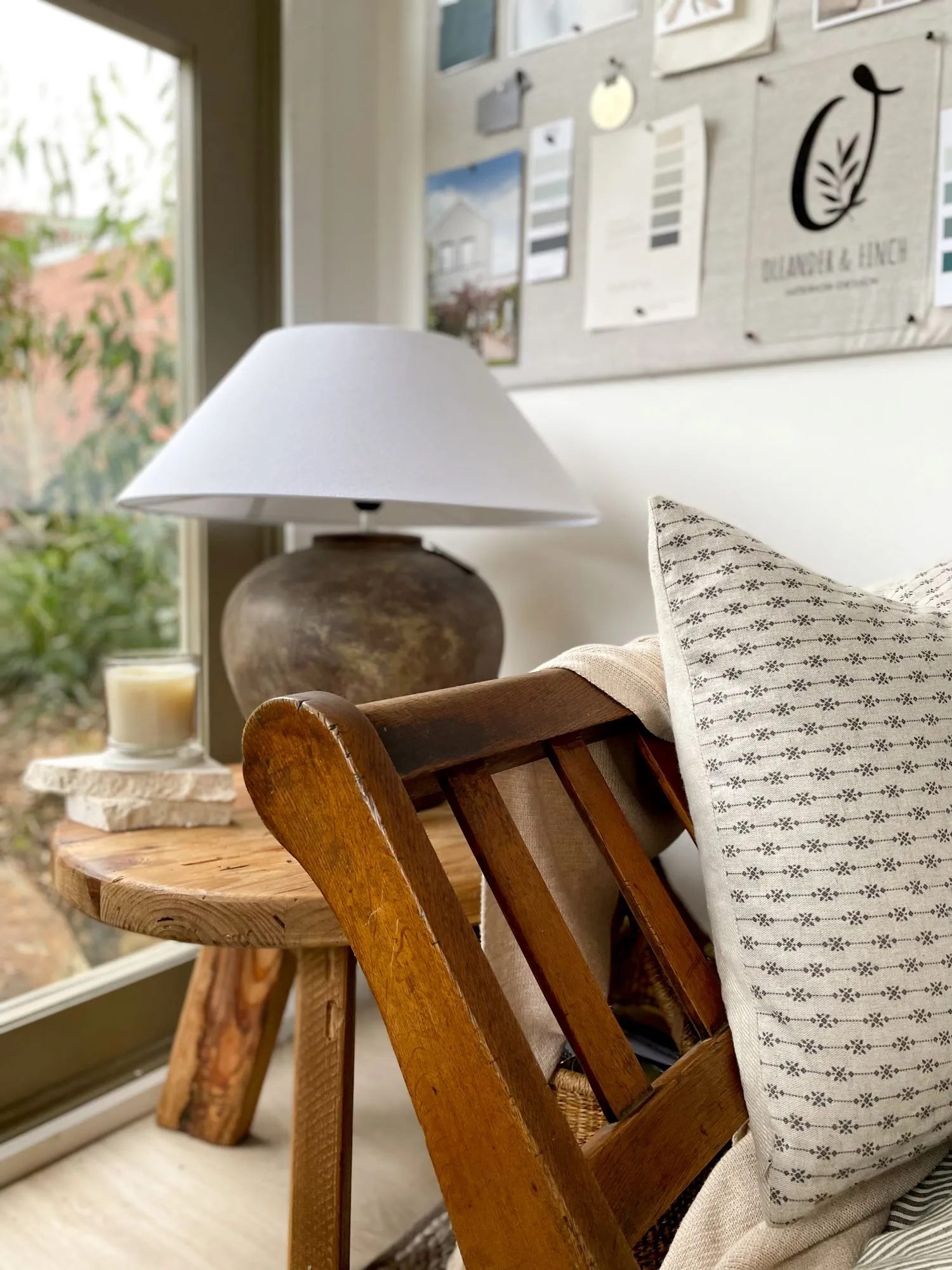
We know you mentor a lot of emerging designers in Australia. What would be your advice to a designer who is wanting to go out on their own and freelance but is nervous to take that step?
Take a deep breathe and take the first step - just get started. Always choose excellence over perfection (meaning nothing is perfect, I’m sure your first version of freelance or business is good enough, don’t wait for perfect as it’s not coming.) If you want it bad enough and are willing to work for it, your tenacity and determination will always pay off. I would also just advise to be open to learning and evolving and seek advice or mentorship from someone who’s already been where you are.
You’re also a big advocate for creating mood boards. Why do you think mood boards are such a vital part of the interior design process?
Running such a busy business (and family!) allows less-than-ideal time to focus on your own projects, so it’s an imperative part of planning. Knowing how to mood board options prior to shopping is a helpful skill to have in my toolbox. For the studio build, it allowed me to mix up finishes and exterior choices like paint colours and lighting. For regular day-to-day working with clients, mood boarding is such an important help with selecting materials, it allows for thousands of iterations and ideas before a final sign off and moving the project forward which saves making any real-life mistakes.
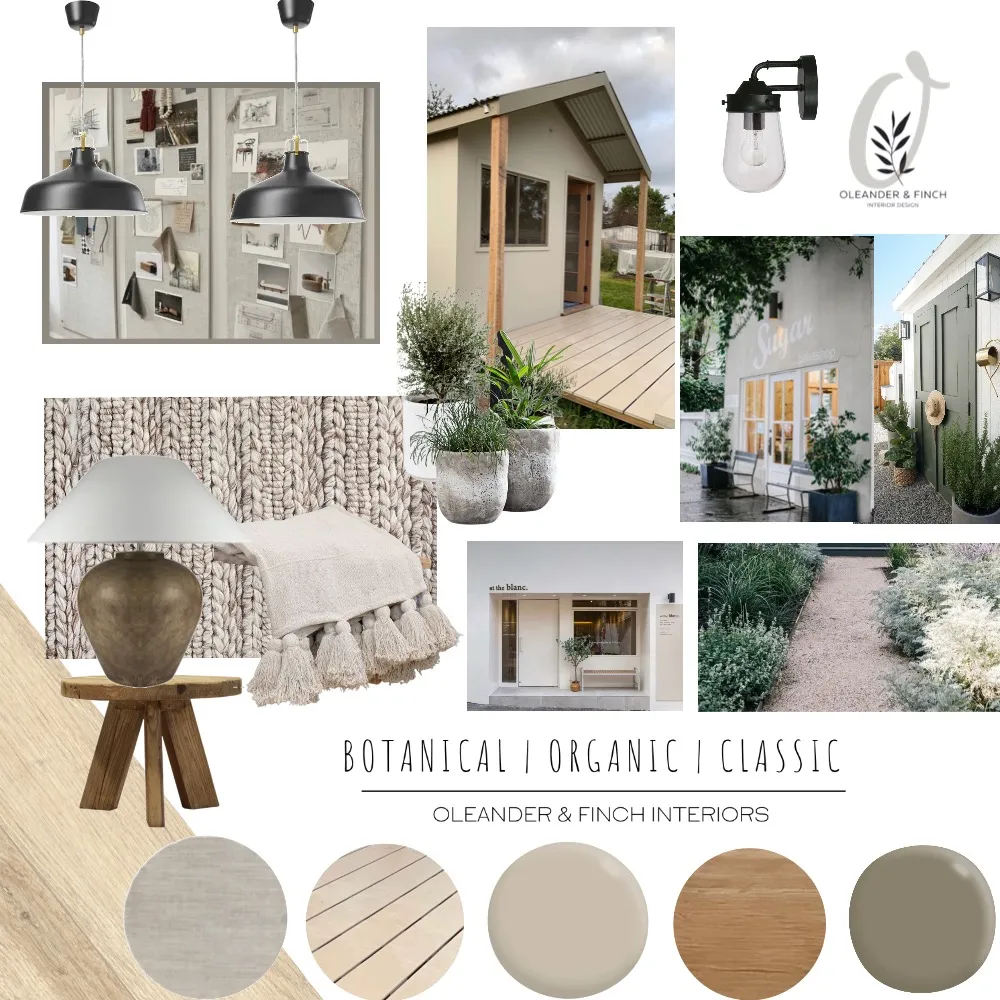 Studio Mood Board By Oleander and Finch Interiors. View here.
Studio Mood Board By Oleander and Finch Interiors. View here.
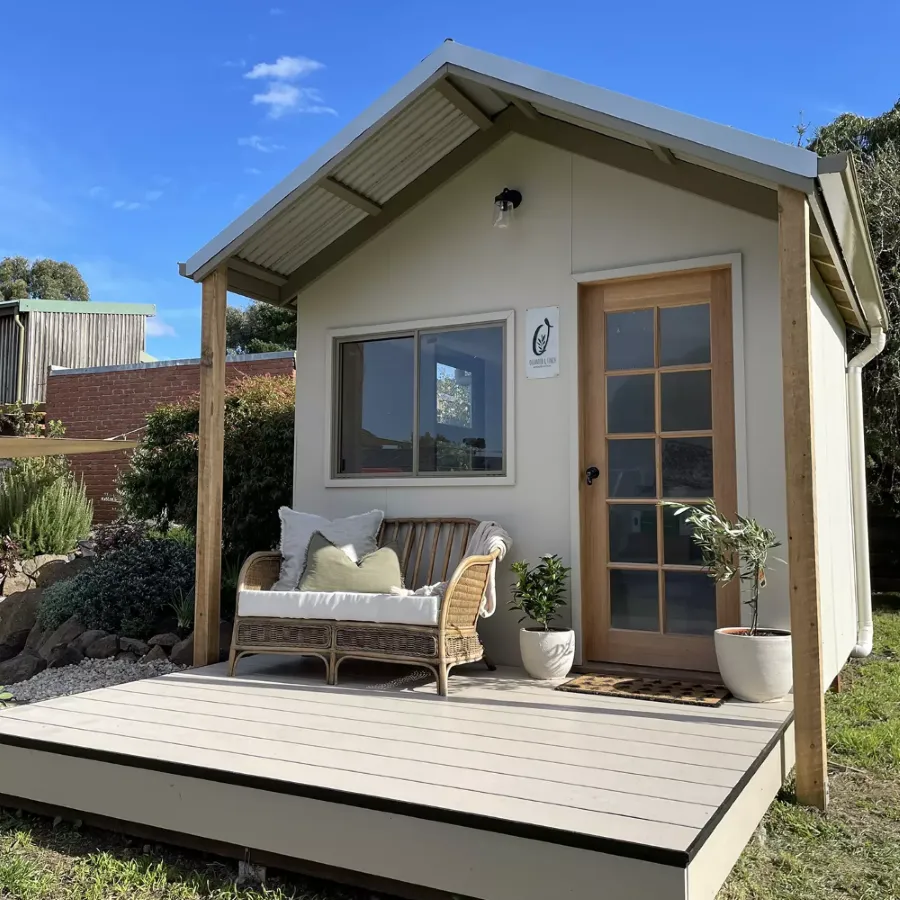
So, if you are feeling a tad bit inspired (like us) and want to explore more of Rhiannon’s design studio, you can also read this article by James Hardie and watch the video they created to see how the studio was created below.
Additionally, bring your own work from home studio to life by creating a mood board.

